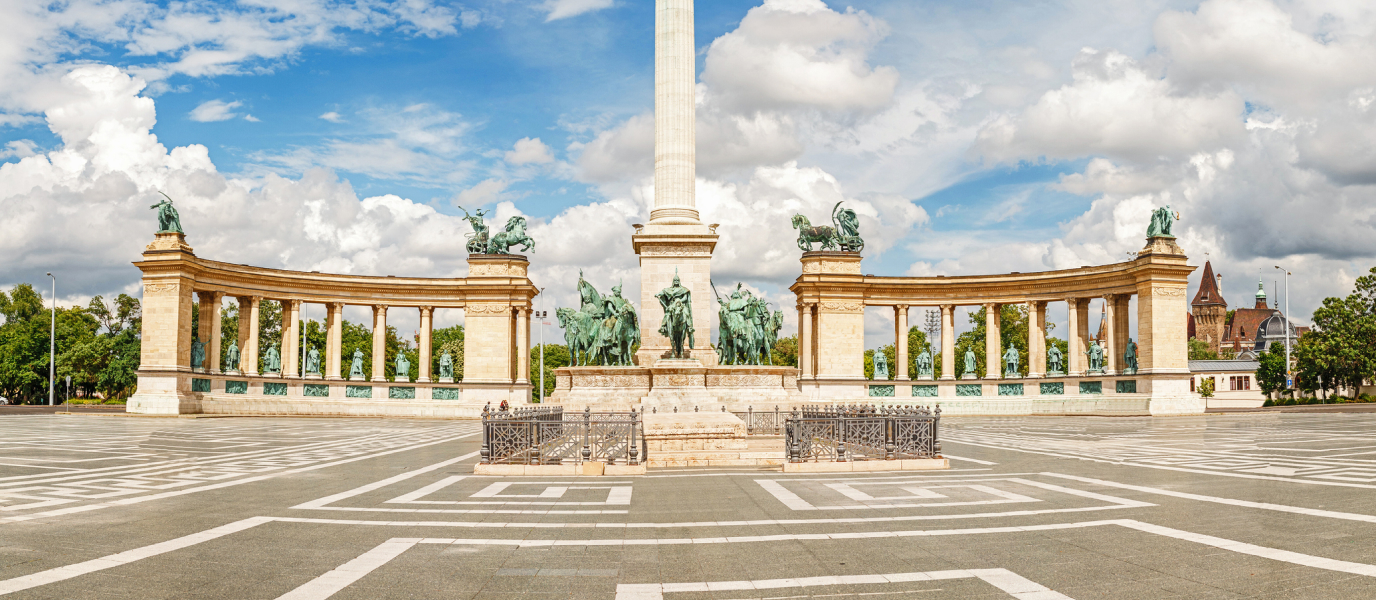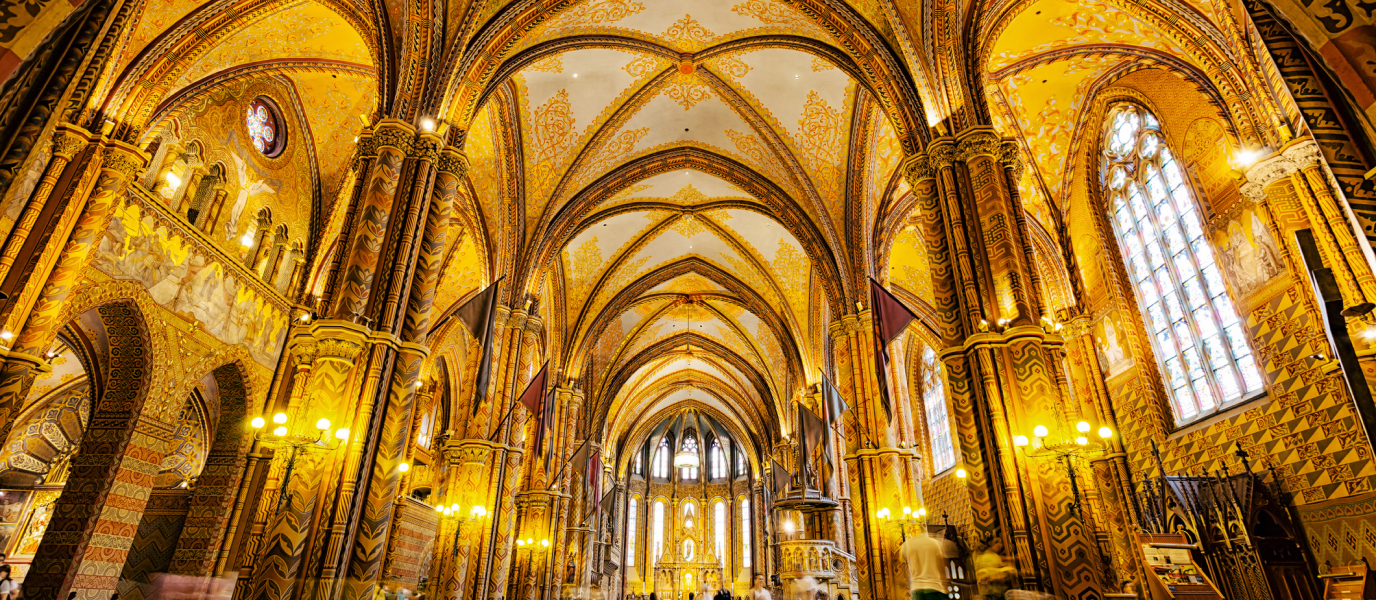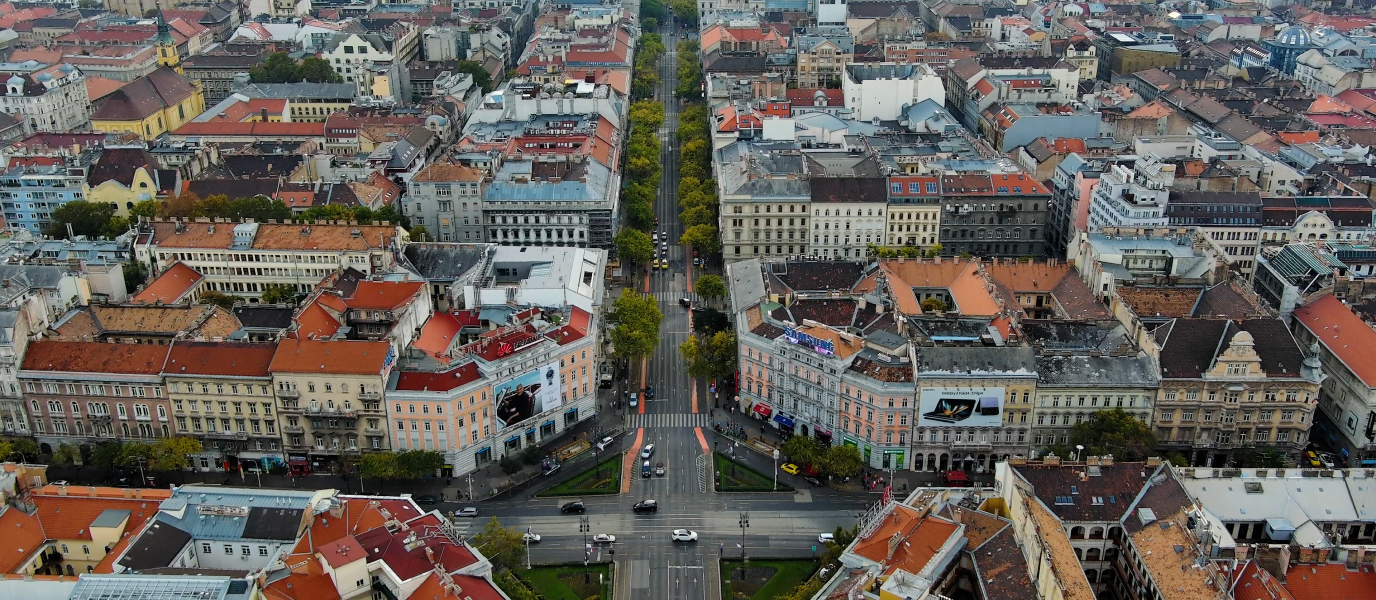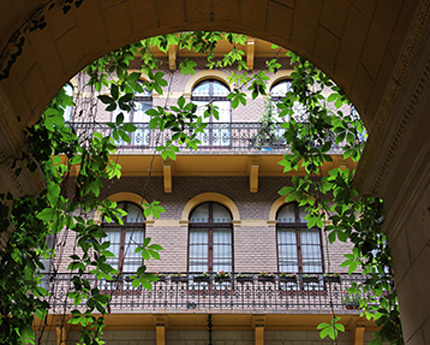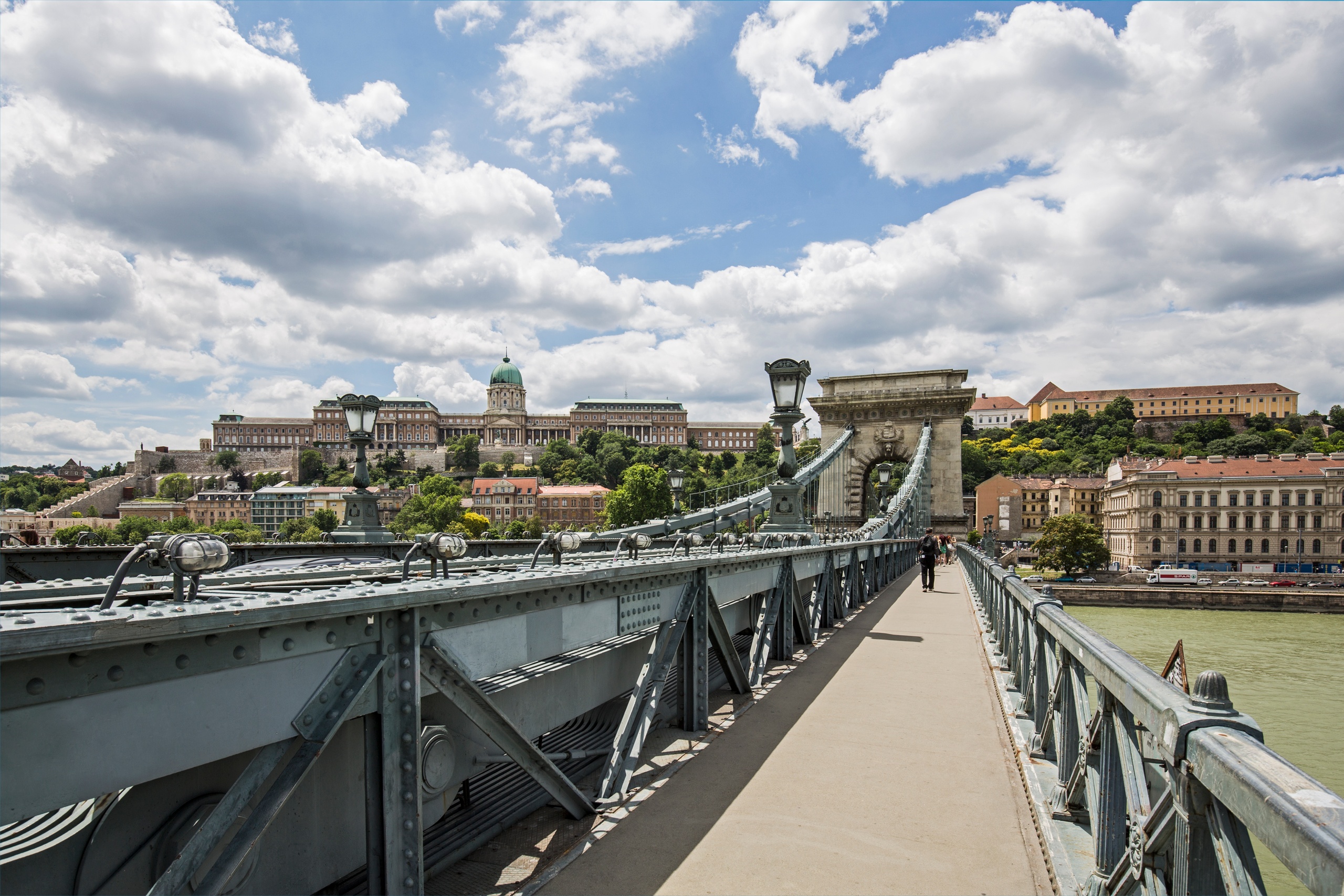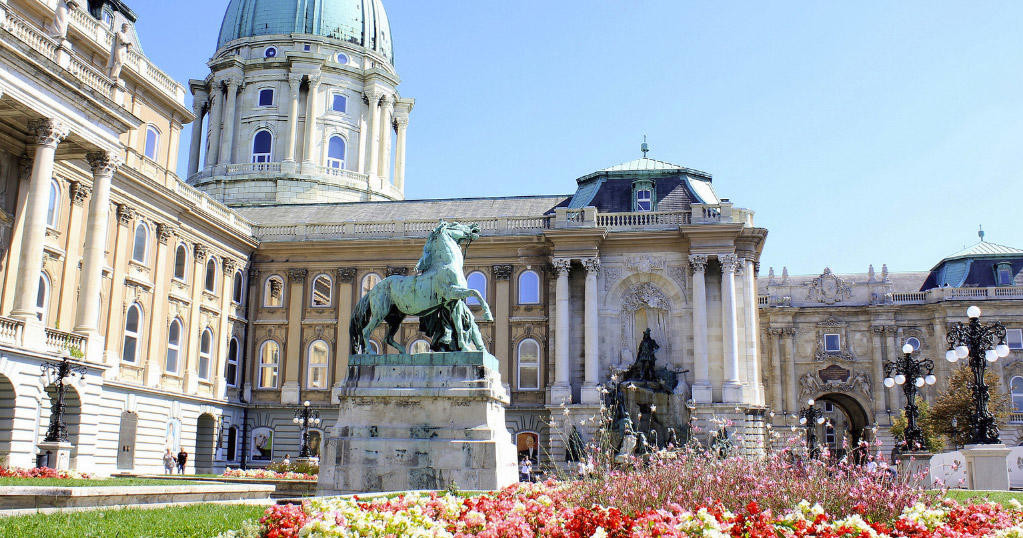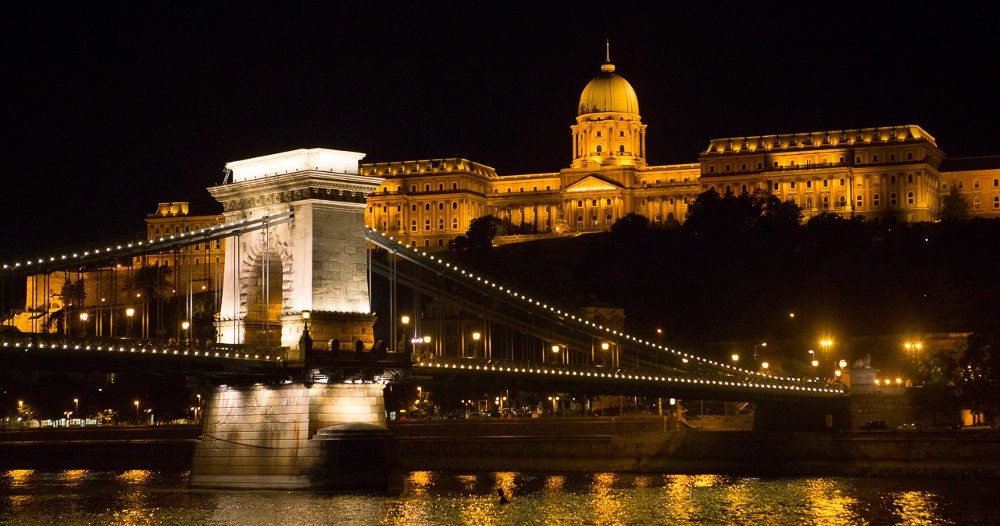One of Budapest’s most symbolic spots is Heroes’ Square. This esplanade with its monuments is a tribute to the founders of Hungary, and a memorial to the country’s historic figures.
Heroes’ Square (in Hungarian, Hosok tere), lies at the end of elegant, prestigious Andrassy Avenue, at the entrance to the Városliget (City Park). It is, without a shadow of a doubt, a magnificent entrance to Budapest’s main park.
The square forms part of the complex designated a UNESCO World Heritage Site.
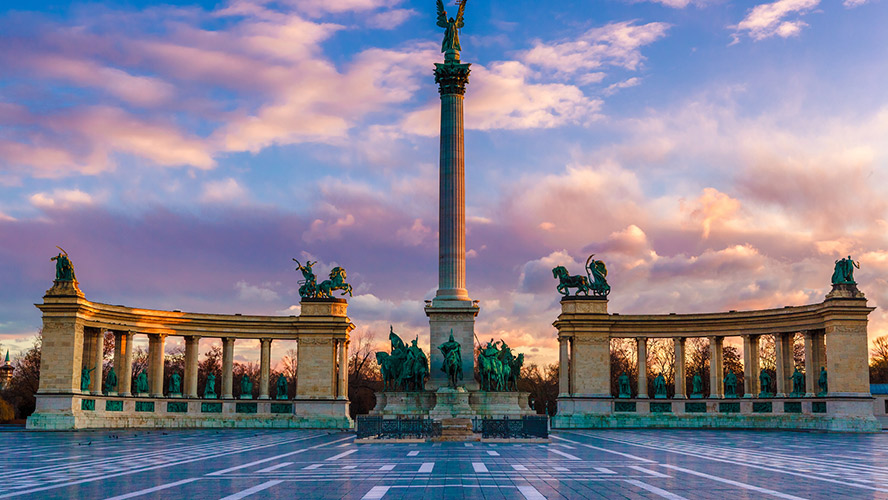
The history and origins of Heroes’ Square
The origins of Heroes’ Square date back to the late nineteenth century. In 1895, it was decided to build the so-called Millennium Monument as a national pantheon — to commemorate the one thousandth anniversary of the Hungarian conquest of the Carpathians and the founding of the Hungarian state in 896.
The idea was the springboard for a remodelling that affected Andrassy Avenue, and for the building of the city’s first metro line. The monument, designed by Albert Schickedanz, was completed in 1900, although sculptures were still being added to it right up to its final opening ceremony in 1906.
The Heroes’ Square monument commemorates the first thousand years of Hungary’s existence with a representation of the seven Magyar tribes that founded the country. Alongside them, there is space for 13 statues of national heroes, which were put in place between 1905 and 1911.
Originally, five of these spaces were reserved for members of the Habsburg dynasty, as at that time Hungary was part of the Austro-Hungarian Empire. But when the monument was rebuilt following the Second World War, those sculptures were replaced by the current statues.
Opposite the monument is the Memorial Stone of Heroes (Hősök emlékköve), a massive stone cenotaph surrounded by an iron chain and dedicated: “To the memory of the heroes who gave their lives for the freedom of our people and our national independence”. The stone was set in place in 1929.
Contrary to popular belief, it is not the tomb of the unknown soldier, but a tribute to all those who died defending Hungary’s frontiers for over 1,000 years. In 1951, the stone was removed, as its message was not politically acceptable to the communist regime, but was restored years later.
The square has witnessed many historic moments. One of the most significant was on 16 June 1989, during the post-Soviet transition period. Around 250,000 people gathered here for the funeral of Imre Nagy, prime minister during the communist period, who was executed in 1958 following the Hungarian Uprising of 1956. His body had been hidden away for 32 years, but now his memory was finally restored. His funeral became a symbol of the country’s transition to democracy.
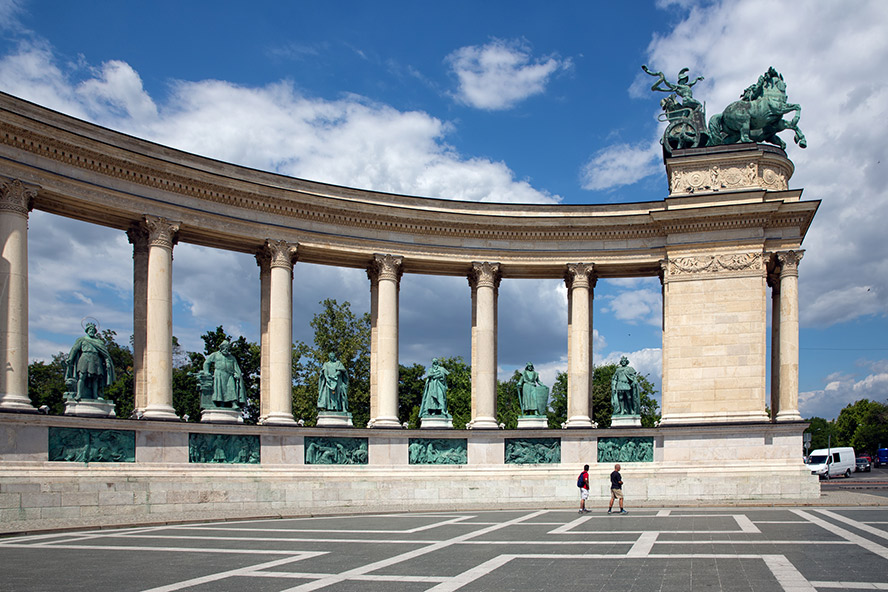
What to see in Heroes’ Square
In the centre of Heroes’ Square stands the Millennium Monument: a huge column, 36 metres tall, surrounded by statues of the seven Hungarian tribal chiefs: Álmos, Elod, Huba, Kond, Ond, Tas and Töhötöm.
Behind them, on both sides, are two colonnades with the statues of the national heroes. From left to right, we can see kings such as St. Stephen I of Hungary, St. Ladislaus I of Hungary, Coloman I of Hungary, Andrew II of Hungary, Bela IV of Hungary, Charles Robert I of Hungary, and Louis I of Hungary.
On the right-hand side stand the statues of the Regent János Hunyadi, his son King Matthias Corvinus, and nobles such as Stephen Bocskai, Gabriel Bethlen, Emeric Thököly, Francis II Rákóczi, and Lajos Kossuth.
Interesting facts about Heroes’ Square
The monument’s column is crowned by the figure of St. Gabriel. This is because the archangel appeared to St. Stephen in a dream, and offered him the crown of Hungary. Pope Sylvester II recognised King Stephen as a defender of Christianity, and sent him a crown. So the figure of St. Gabriel is holding a replica of that crown (the original is kept in the Hungarian Parliament) and a Cross recognising Hungary as a Christian country.
Another fascinating fact relates to what was on this spot before the square was built. Here, in 1878, the engineer Zsigmondy Vilmos sank a 971-metre well to discover the thermal springs that now supply the nearby Széchenyi baths. A plaque records the event.
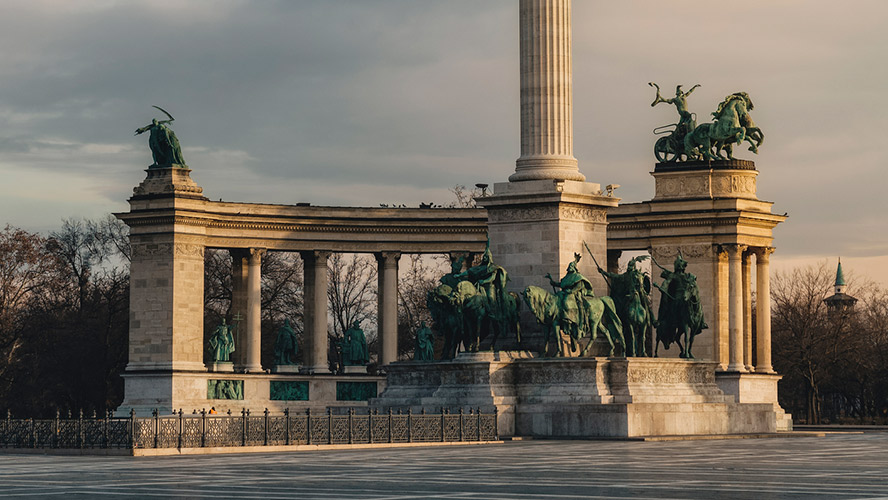
Where to eat near Heroes’ Square
Heroes’ Square lies right at the entrance to Városliget Park, so visitors can eat inside or outside the park. Inside the park, you will find several terrace bars, cafés and restaurants, including the Robinson, the Gundel, and Zöld Küllö.
If you’d prefer to eat in one of the nearby streets, you could try the Paprika Vendéglo, a popular restaurant serving Hungarian cooking with soups and plenty of meat dishes at very reasonable prices.




































































